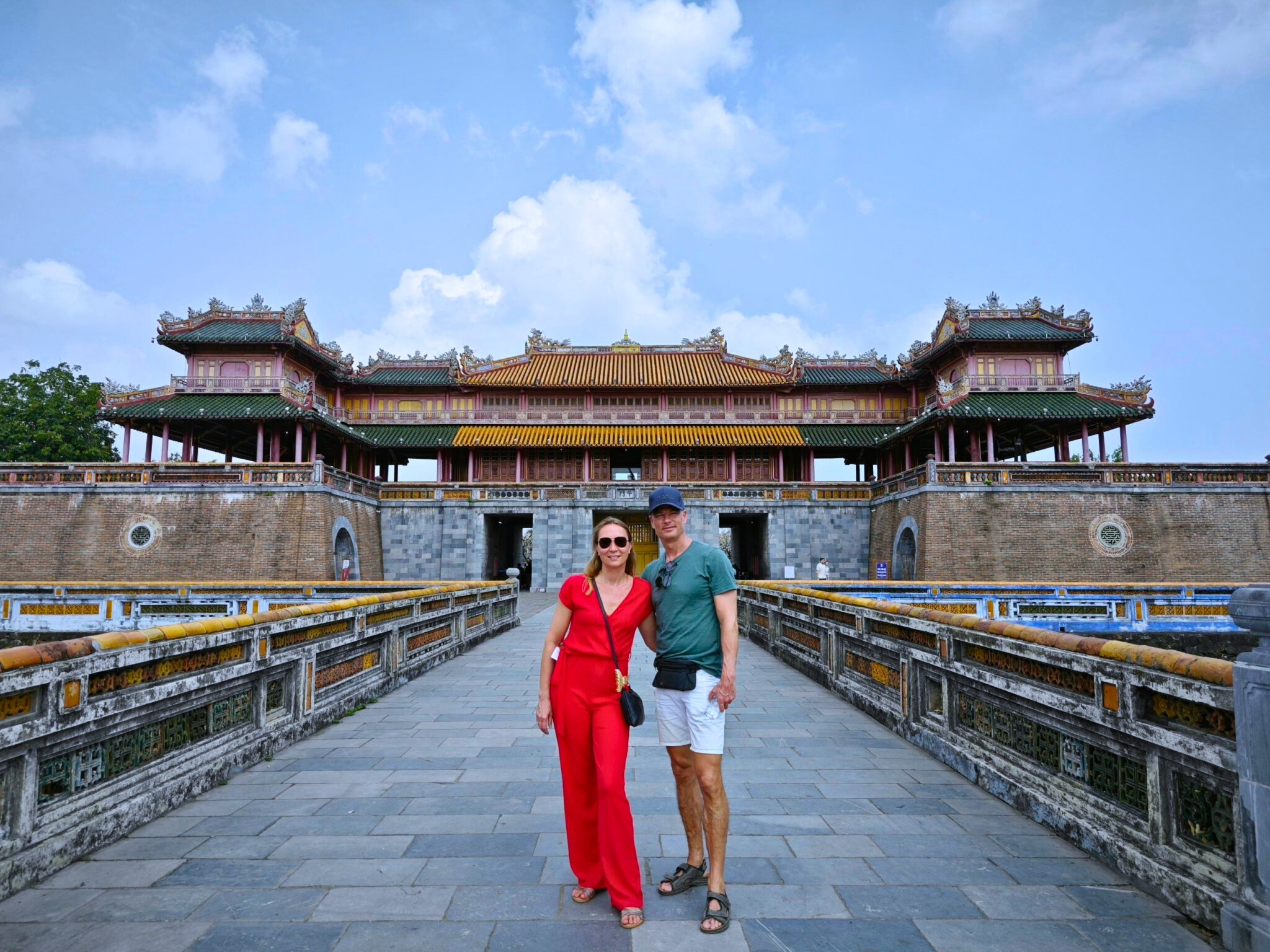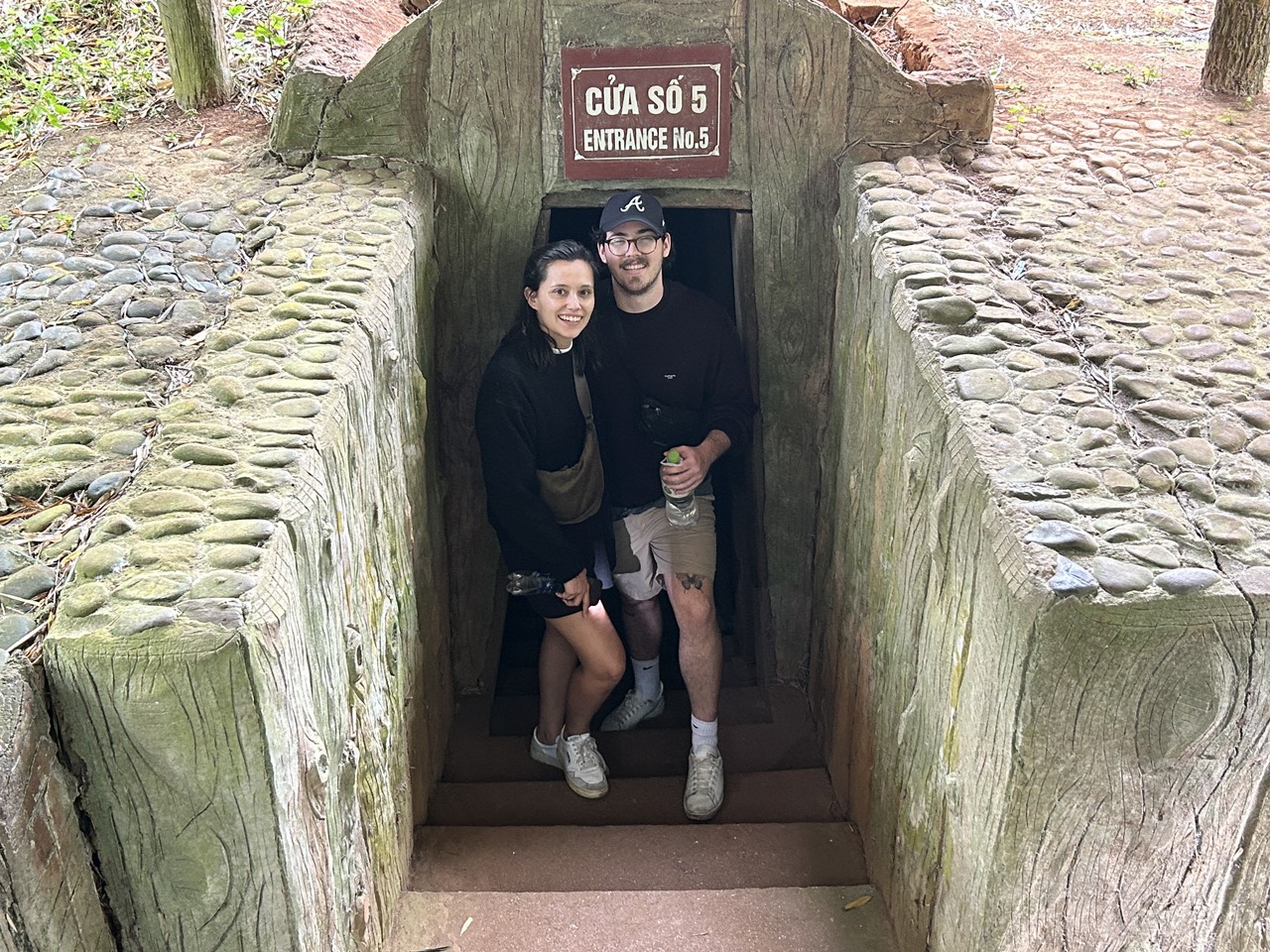Have you ever wondered where those exquisite Hue traditional handicrafts that captivate tourists worldwide actually come from? Deep within the ancient capital’s suburban areas lie centuries-old villages where artisans continue to practice their ancestral crafts, creating masterpieces that embody Vietnam’s cultural soul.
In this comprehensive guide, we’ll explore the vibrant world of Hue traditional handicraft villages, uncovering their unique products, time-honored techniques, and the best ways to experience these living museums of Vietnamese artistry.
What Makes Hue Traditional Handicraft Villages Special?
Unlike mass-produced souvenirs, products from Hue’s artisan villages carry the weight of history and the personal touch of skilled craftspeople. These villages have preserved techniques passed down through generations, creating items that aren’t just beautiful—they’re cultural artifacts.
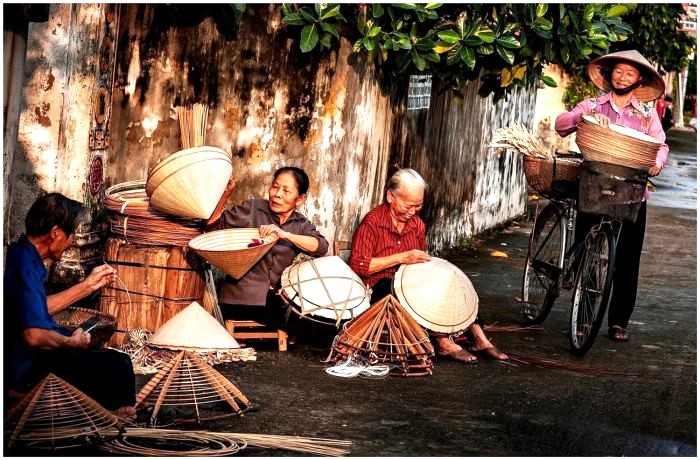
The Imperial City’s legacy has profoundly influenced these villages. During the Nguyen Dynasty (1802-1945), royal patronage elevated local crafts to art forms, establishing quality standards that persist today. This heritage makes Hue handicraft tourism a unique experience compared to other Vietnamese destinations.
Top 5 Must-Visit Hue Traditional Handicraft Villages
1. Phuoc Tich Ancient Village – The Pottery Paradise
Located 40km northwest of Hue, Phuoc Tich pottery village has been shaping clay for over 500 years. This well-preserved village offers visitors an authentic glimpse into traditional Vietnamese pottery making.
“Every piece of pottery here tells a story—from the clay sourced from the O Lau River to the hands that shape it using techniques unchanged since the 15th century.” – Master Potter Nguyen Van Duc
What makes Phuoc Tich special:
- Unique glazing techniques producing distinctive jade-green finishes
- Traditional wood-fired kilns still in operation
- Hands-on pottery workshops for visitors
- Ancient architecture with over 30 heritage houses
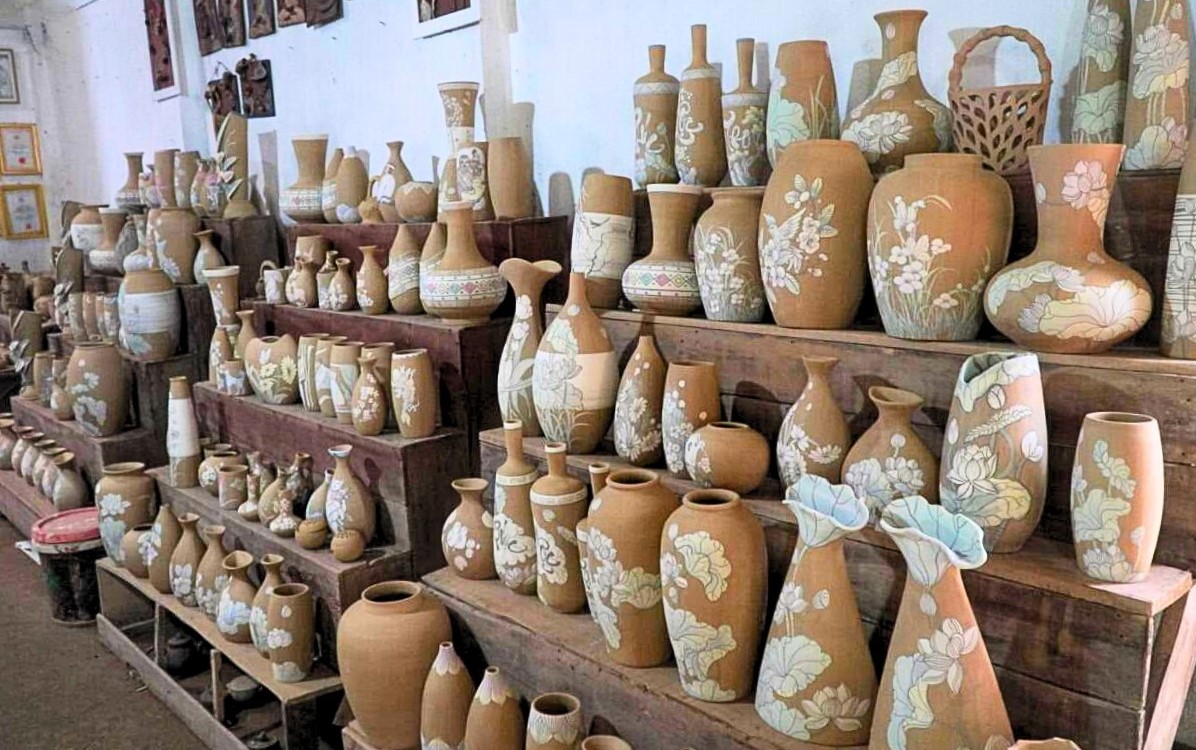
2. Thanh Tien Paper Flower Village – Where Art Blooms Eternally
Just 3km from Hue city center, Thanh Tien paper flower making has flourished for 400 years. These aren’t ordinary paper flowers—they’re intricate works of art that once adorned royal ceremonies.
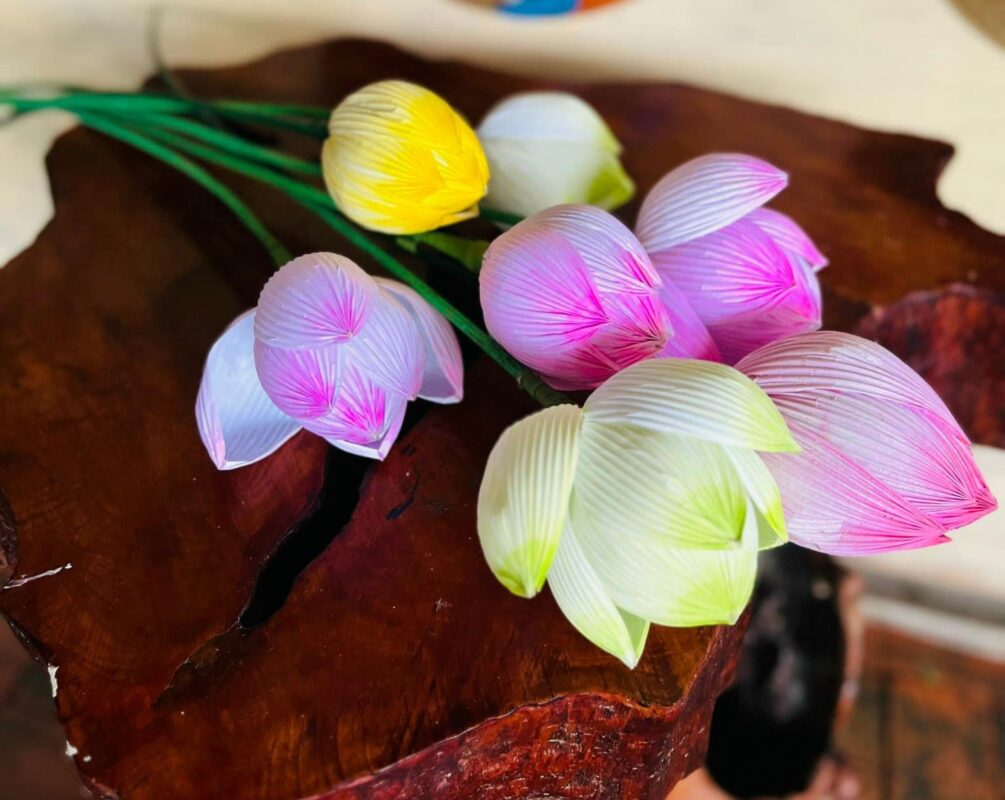
Visiting Thanh Tien offers:
- Demonstrations of traditional paper flower crafting
- Opportunities to create your own paper flowers
- Seasonal festivals celebrating the craft
- Direct purchases from artisan families
3. Sinh Village – Traditional Paintings Come to Life
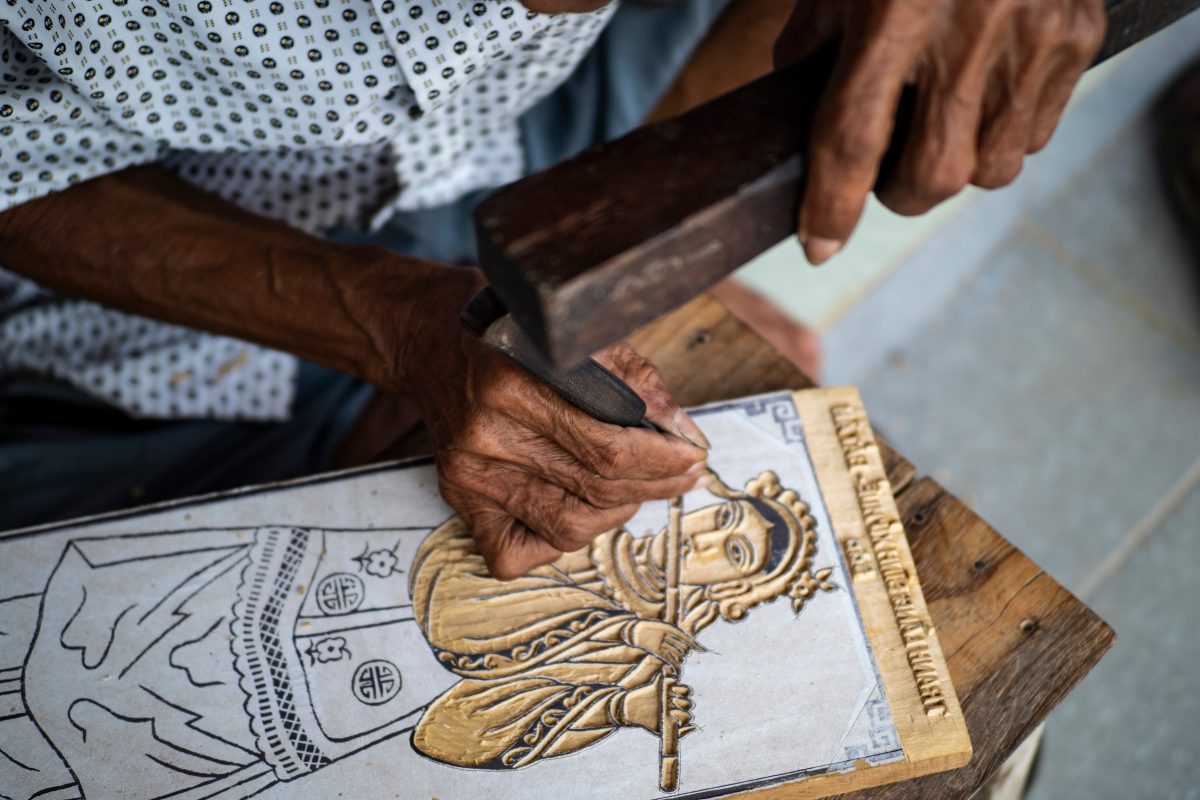
Sinh village folk paintings represent one of Vietnam’s most distinctive art forms. Located 9km east of Hue, this village has produced woodblock prints for over 400 years, originally creating religious and decorative images for Tet celebrations.
The painting process involves:
- Carving intricate designs into woodblocks
- Applying natural dyes and pigments
- Hand-printing on traditional do paper
- Adding final touches with brushwork
4. My Xuyen Incense Village – Fragrance of Tradition
The vibrant sight of thousands of incense sticks drying in the sun makes My Xuyen village a photographer’s paradise. Located in Huong Tra district, this village has supplied incense for religious ceremonies for centuries.
Key experiences include:
- Learning about traditional incense making processes
- Understanding the cultural significance of different scents
- Purchasing authentic ceremonial incense
- Capturing stunning photographs of colorful incense fields
5. Ke Mon Weaving Village – Threads of Heritage
Famous for its traditional brocade weaving, Ke Mon village maintains looms that have operated for generations. The intricate patterns woven here once clothed royalty and continue to represent the pinnacle of Vietnamese textile art.
Comparison of Hue Traditional Handicraft Villages
| Village | Main Craft | Distance from Hue | Best Time to Visit | Workshop Available |
|---|---|---|---|---|
| Phuoc Tich | Pottery | 40km | Morning | Yes |
| Thanh Tien | Paper Flowers | 3km | Any time | Yes |
| Sinh Village | Folk Paintings | 9km | Morning | Limited |
| My Xuyen | Incense | 7km | Early morning | Yes |
| Ke Mon | Weaving | 15km | Afternoon | By appointment |
Planning Your Hue Handicraft Village Tour
When to Visit
The ideal time for exploring Hue traditional craft villages is during the dry season (March to August). However, each village has its peak times:
- Early morning (6-9 AM): Best for photography and watching artisans begin their daily work
- Late afternoon (3-5 PM): Ideal for workshops when the day’s heat subsides
- Festival seasons: Experience villages at their most vibrant during Tet or local celebrations
How to Get There
Transportation options for your handicraft village tour:
- Motorbike rental: Most flexible option (150,000-200,000 VND/day)
- Private car with driver: Comfortable for groups (800,000-1,200,000 VND/day)
- Organized tours: Convenient with included guide (explore SAMTOUR’s Hue handicraft village tours)
- Bicycle: Eco-friendly for nearby villages (50,000 VND/day)
Making the Most of Your Village Visits
Cultural Etiquette
Respecting local customs ensures meaningful interactions:
“Visitors who show genuine interest in our craft and respect our traditions are always welcome. A smile and greeting in Vietnamese opens many doors.” – Le Thi Hong, Thanh Tien artisan
- Ask permission before photographing artisans at work
- Remove shoes when entering workshops or homes
- Support artisans by purchasing directly when possible
- Participate respectfully in hands-on activities
What to Buy and How to Choose
Selecting authentic Hue handicrafts requires knowledge:
Quality indicators to look for:
- Hand-finished details showing slight irregularities
- Traditional materials and natural dyes
- Artisan signatures or village marks
- Reasonable prices reflecting craftsmanship time
Combining Handicraft Villages with Hue Attractions
Maximize your Hue experience by combining village visits with nearby attractions:
Sample One-Day Itinerary
- 7:00 AM: Breakfast at Dong Ba Market
- 8:00 AM: Visit Thanh Tien Paper Flower Village
- 10:00 AM: Explore Hue Imperial City
- 2:00 PM: Lunch at local restaurant
- 3:00 PM: My Xuyen Incense Village photography
- 5:00 PM: Sunset at Thien Mu Pagoda
Supporting Sustainable Handicraft Tourism
Your visit can contribute to preserving these traditional crafts:
- Choose responsible tour operators that give back to communities
- Buy directly from artisans ensuring fair compensation
- Share your experience on social media to promote awareness
- Respect photography policies and intellectual property
According to Responsible Travel Organization, sustainable tourism practices help preserve traditional crafts for future generations while providing economic benefits to local communities.
Expert Tips for Handicraft Village Exploration
Based on extensive experience guiding visitors through Hue’s artisan villages, here are insider recommendations:
Photography Tips
- Golden hour lighting (6-7 AM, 4-5 PM) creates stunning craft photos
- Focus on artisan hands at work for compelling storytelling shots
- Capture the contrast between ancient techniques and modern life
- Use natural light from workshop windows for product photos
Shopping Strategies
Get the best value and authentic pieces:
- Compare prices across different workshops before buying
- Ask about custom orders for personalized souvenirs
- Learn basic Vietnamese numbers for better negotiation
- Bring cash as most villages don’t accept cards
Frequently Asked Questions
Q: Which handicraft village is best for families with children?
A: Thanh Tien Paper Flower Village offers the most interactive experience for children, with easy workshops and colorful displays that capture young imaginations.
Q: Can I ship larger handicrafts internationally?
A: Yes, many villages partner with shipping services. Alternatively, SAMTOUR can assist with shipping arrangements for purchased items.
Q: Are English-speaking guides available at the villages?
A: While some artisans speak basic English, hiring a guide ensures deeper cultural understanding and smoother communication.
Conclusion
Exploring Hue traditional handicraft villages offers more than shopping opportunities—it’s a journey through living history where ancient skills create contemporary treasures. Each village tells a unique story of cultural preservation, artistic excellence, and community resilience.
Whether you’re drawn to the meditative pottery wheels of Phuoc Tich, the vibrant paper gardens of Thanh Tien, or the aromatic landscapes of My Xuyen, these villages provide authentic encounters with Vietnamese culture that no museum can replicate.
Plan your visit thoughtfully, engage respectfully with artisans, and support these communities through conscious purchasing. Your journey through Hue’s handicraft villages won’t just fill your suitcase with beautiful souvenirs—it will enrich your understanding of Vietnam’s artistic heritage and create memories that last far longer than any craft you take home.
Ready to discover the artistic soul of Hue? Explore SAMTOUR’s specially curated handicraft village experiences and let expert guides introduce you to the masters keeping these traditions alive.


